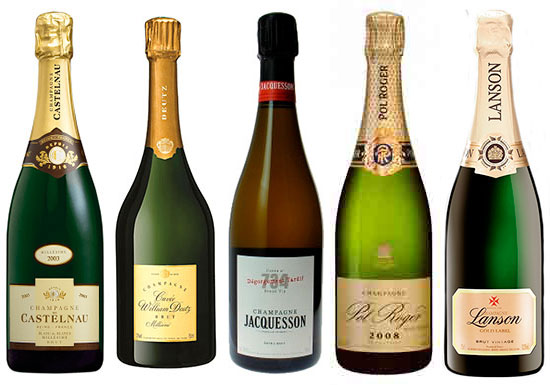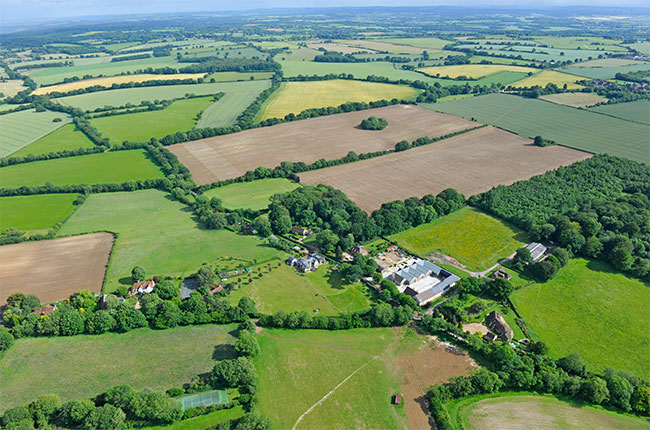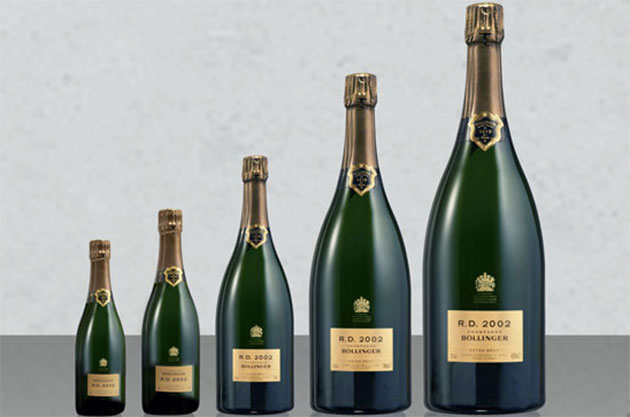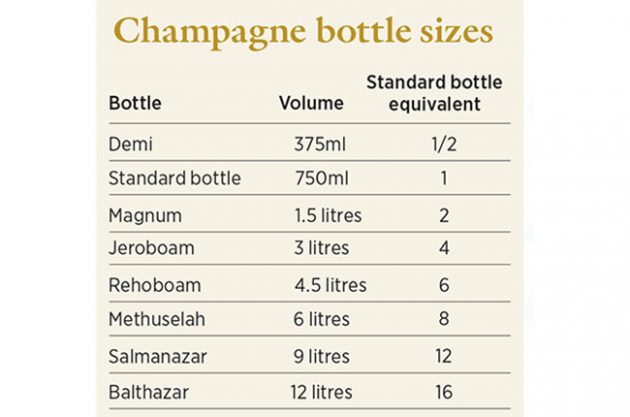Is bigger necessarily better when it comes to bottle size? And does it have a special significance when it comes to Champagne, which can benefit from late disgorgements? Michael Edwards investigates...
Champagne: why size matters
Comparing formats
Michel Drappier, the leading producer of the Aube district of southern Champagne is a specialist in the larger formats up to the giant 15-litre nebuchadnezzar. So he has interesting insights and facts about size. There’s no doubt in his mind that the magnum has more finesse and less oxidation, and shows more freshness. The proportion of oxygen that gets into the bottle during disgorgement is half that compared to a standard bottle.
‘Something that has been recently tested,’ Drappier observes, ‘is that the quantity of oxygen included in the cork is also divided by two because the cork of a bottle and magnum are identical. This is not the case for the jeroboam and larger sizes: the surface of wine exposed to ultraviolet is proportionally less in a magnum: the distance that external factors (such as temperature, UV and vibrations) have to cross is longer.’ Significantly, half bottles he never mentions, but then everyone agrees that halves mature too rapidly – not what great Champagne is all about.
In Reims, Jean-Baptiste Lécaillon, cellar master and vice-president of Louis Roederer, is famous for his ability to think outside the box. ‘For the comparative tasting, to do it properly, you have to work on the same cuvée (same base year) with half, bottle, magnum and jeroboam to see the effect of the format on the same wine. Furthermore, you should have the same disgorging date to see the difference. Such a thing is virtually impossible to do unless you plan the tasting well in advance – say a year ahead – to eliminate all these variables and have a clear view.’

Jean-Baptiste Lécaillon
Lécaillon stresses the fact that every bottle in Champagne is a fermentation vessel. ‘The secondary fermentation is the heart of our méthode traditionelle, as it is an amplifier of complexity: the bigger the format, the longer the fermentation, which creates more complexity – a more seamless texture. Second, you have the oxidative facts: the bigger the format, the less oxidative you are. In the end, my preference is clearly for the magnum which achieves a perfect balance between complexity, freshness and intensity.’
-
Find the full story in Decanter magazine, subscribe to the latest issue here.
Taste is everything
Veuve Clicquot is probably the grande maison most admired by competitors and growers alike for its mastery of marketing in tandem with a commitment to an uncompromising wine ethos. For all the house’s presentational glamour, it’s what is in the bottle that matters most to Dominique Demarville and his winemaking team. They are especially grateful to former cellar masters from 1960 to 2008 who had set aside good quantities of vintage Champagne, both as yardsticks for making current ones and, perhaps more importantly, providing exquisitely preserved vintages from their wine library for connoisseurs to enjoy now in the Cave Privée collection. ‘We love magnums of course, but jeroboams too,’ says Demarville. ‘The essential factor of ageing wine is the gift of controlled oxygen which, little by little, releases aromas and polyphenols that are the mark of grands vins.’

Ruinart Blanc de Blanc NV magnums on a riddling rack
The important point to reiterate is that the larger wine surface area of a magnum or jeroboam allows for the optimum balance of freshness and flavour intensity so prized by wine lovers. One of the most memorable illustrations of this came in a tasting of Veuve Clicquot’s Cave Privée held in June 2014. The 1982 is probably the greatest Clicquot vintage ever made, say the team. In bottle, it had a delicate mousse, exquisite scents of lemon confit, then a saline flavour relieved by secondary notes of dried apricot and cocoa. The magnum pushed the wine a notch up: such vigour and energy, dancing acidity and wafting white flowers, then a magnificent palate of controlled yeasty autolysis and majestic Pinot vinosity.
Copy editing for Decanter.com by Laura Seal
More related Champagne stories:

Farewell to Champagne flutes?

My goal is to make Champagne flutes ‘obsolete’, says Maximilian Riedel
Serving Champagne in flutes will one day be consigned to the annals of history if Maximilian Riedel, 11th generation of

Birthday Champagne: Eight wines to celebrate with
John Stimpfig chooses eight wines to seek out...

Why is there no red Champagne? – ask Decanter

Update: Champagne Pommery to make English wine & develop vineyards








